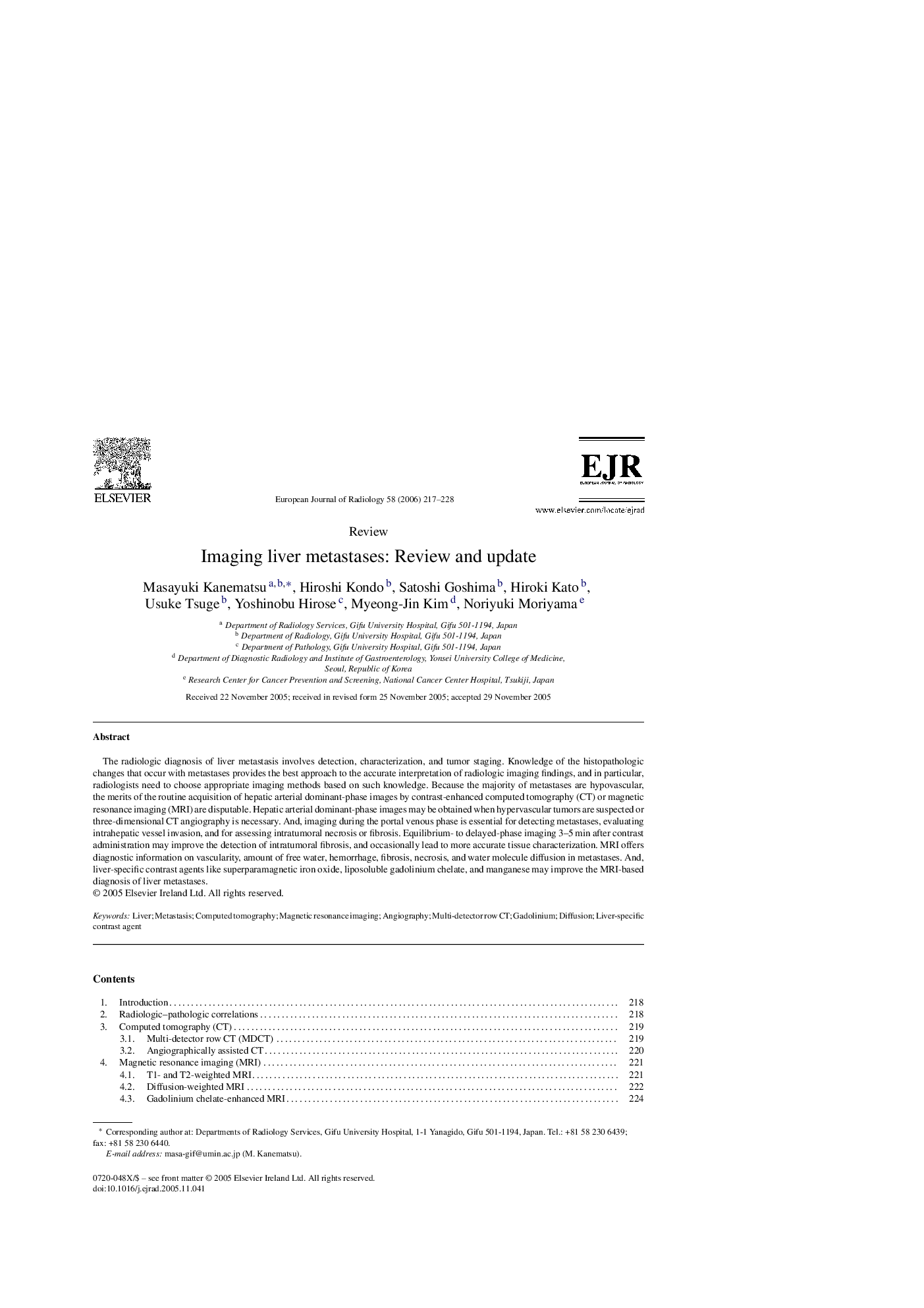| کد مقاله | کد نشریه | سال انتشار | مقاله انگلیسی | نسخه تمام متن |
|---|---|---|---|---|
| 4228671 | 1609865 | 2006 | 12 صفحه PDF | دانلود رایگان |

The radiologic diagnosis of liver metastasis involves detection, characterization, and tumor staging. Knowledge of the histopathologic changes that occur with metastases provides the best approach to the accurate interpretation of radiologic imaging findings, and in particular, radiologists need to choose appropriate imaging methods based on such knowledge. Because the majority of metastases are hypovascular, the merits of the routine acquisition of hepatic arterial dominant-phase images by contrast-enhanced computed tomography (CT) or magnetic resonance imaging (MRI) are disputable. Hepatic arterial dominant-phase images may be obtained when hypervascular tumors are suspected or three-dimensional CT angiography is necessary. And, imaging during the portal venous phase is essential for detecting metastases, evaluating intrahepatic vessel invasion, and for assessing intratumoral necrosis or fibrosis. Equilibrium- to delayed-phase imaging 3–5 min after contrast administration may improve the detection of intratumoral fibrosis, and occasionally lead to more accurate tissue characterization. MRI offers diagnostic information on vascularity, amount of free water, hemorrhage, fibrosis, necrosis, and water molecule diffusion in metastases. And, liver-specific contrast agents like superparamagnetic iron oxide, liposoluble gadolinium chelate, and manganese may improve the MRI-based diagnosis of liver metastases.
Journal: European Journal of Radiology - Volume 58, Issue 2, May 2006, Pages 217–228